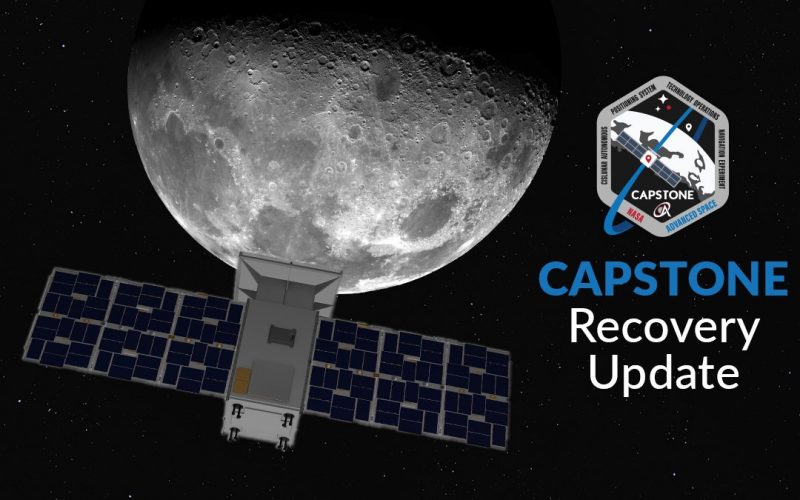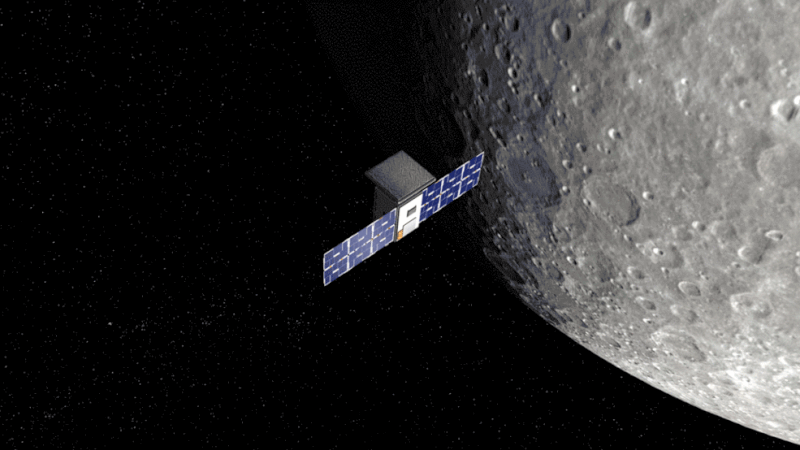
CAPSTONE now stabilized
The Advanced Space company said on Friday (October 7, 2022) that the CAPSTONE spacecraft – part of NASA’s Artemis program to return humans to the moon – is now under control, following a malfunction in early September. CAPSTONE handlers successfully righted the spacecraft, reorienting its solar panels and antennas.
Controllers uploaded recovery software on Thursday, October 6. And they successfully triggered the software Friday morning. The recovery software regained attitude control and returned the spacecraft to a stable position. Advanced Space said:
Initial telemetry and observation data after the recovery attempt points to a successful recovery of the system, which has now regained 3-axis attitude control. The updated spacecraft attitude has oriented the spacecraft solar arrays to the sun and implemented an orientation for the downlink antennas, which significantly improves data downlink performance as compared to the pre-recovery attitude.
What is CAPSTONE?
Launched on June 28, 2022, CAPSTONE stands for Cislunar Autonomous Positioning System Technology Operations and Navigation Experiment. It’s 12-unit CubeSat – a miniaturized satellite, about the size of a microwave oven – weighing just 55 pounds (25 kilograms). It’s serving as a pathfinder for Gateway, part of NASA’s Artemis moon program. Gateway will be a moon-orbiting outpost. CAPSTONE is testing Gateway’s planned, unique, elliptical lunar orbit. It’ll also test a navigation system designed to measure its position relative to NASA’s Lunar Reconnaissance Orbiter, without relying on ground stations.
CAPSTONE is scheduled to arrive at the moon and enter a unique lunar orbit on November 13, 2022, after completing its four-month journey.
What went wrong?
Back on September 8, 2022, mission controllers lost contact with CAPSTONE. When they realized the craft was tumbling through space, its handlers went into emergency mode.
Since then, the engineers have identified what they believe caused the craft to spin. They stated:
…The most likely cause of the anomaly was identified as a valve-related issue on one of the spacecraft’s eight thrusters. The partially open valve resulted in thrust from the associated thruster whenever the propulsion system was pressurized.
Furthermore, they said, that bad valve might still be stuck in the open position. So, from here, mission controllers will rework their mission operating procedures to compensate for the malfunction.

What is CAPSTONE’s role in Artemis?
CAPSTONE will act as a pathfinder to gather data on what’s called ballistic lunar transfers (BLTs) for uncrewed lunar missions. First proposed in 1987, BLTs are a low-energy method of achieving an orbit around a distant planet or moon, with no fuel required to go into orbit. Studies in celestial mechanics indicate that these sorts of transfers have certain advantages. Engineers think they are:
– Safer, as there is no time critical orbit insertion burn.
– Launchable at almost any time, rather than having to wait for a narrow launch window.
– More fuel efficient for some missions.
CAPSTONE will collect critical data for studying ballistic lunar transfers, thereby helping to pave the way for humanity’s return to the moon, hopefully around the middle of this decade.

Bottom line: Engineers say they have CAPSTONE stabilized after uploading recovery software and regaining control of the malfunctioning spacecraft.











